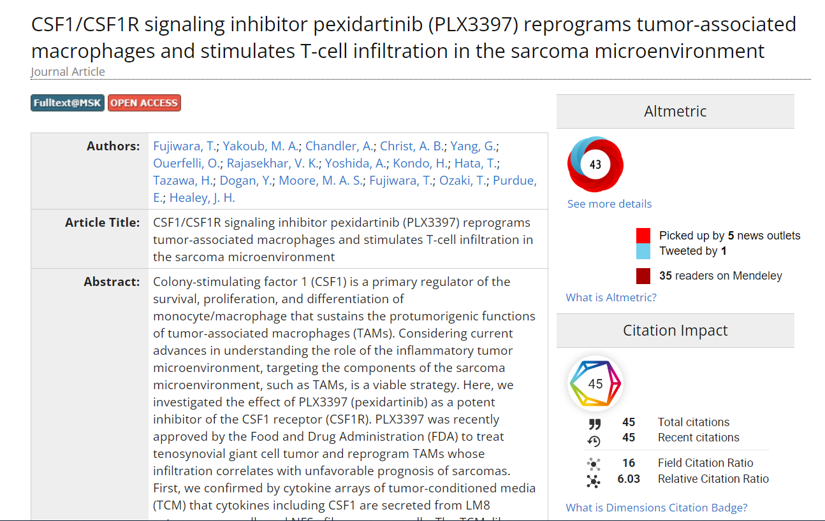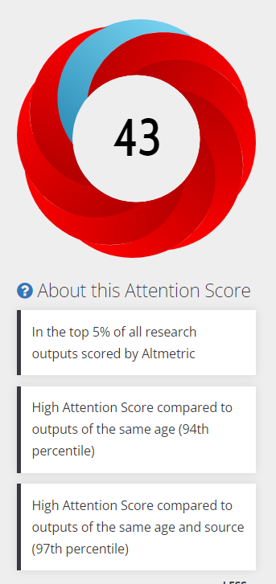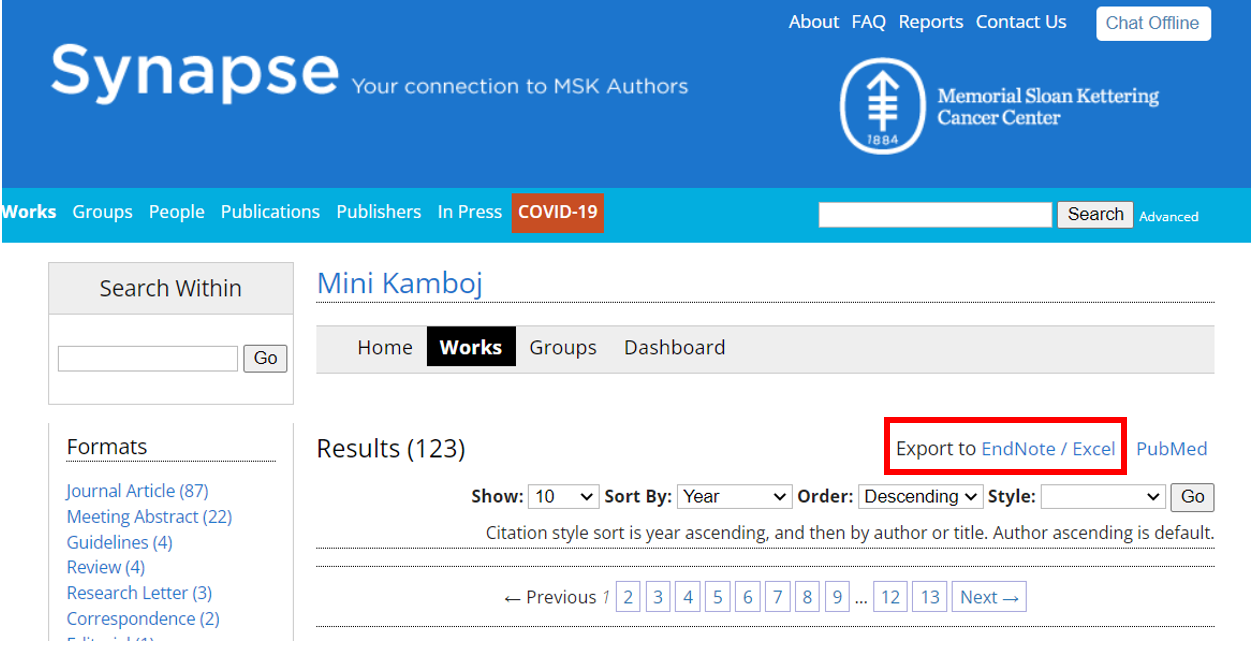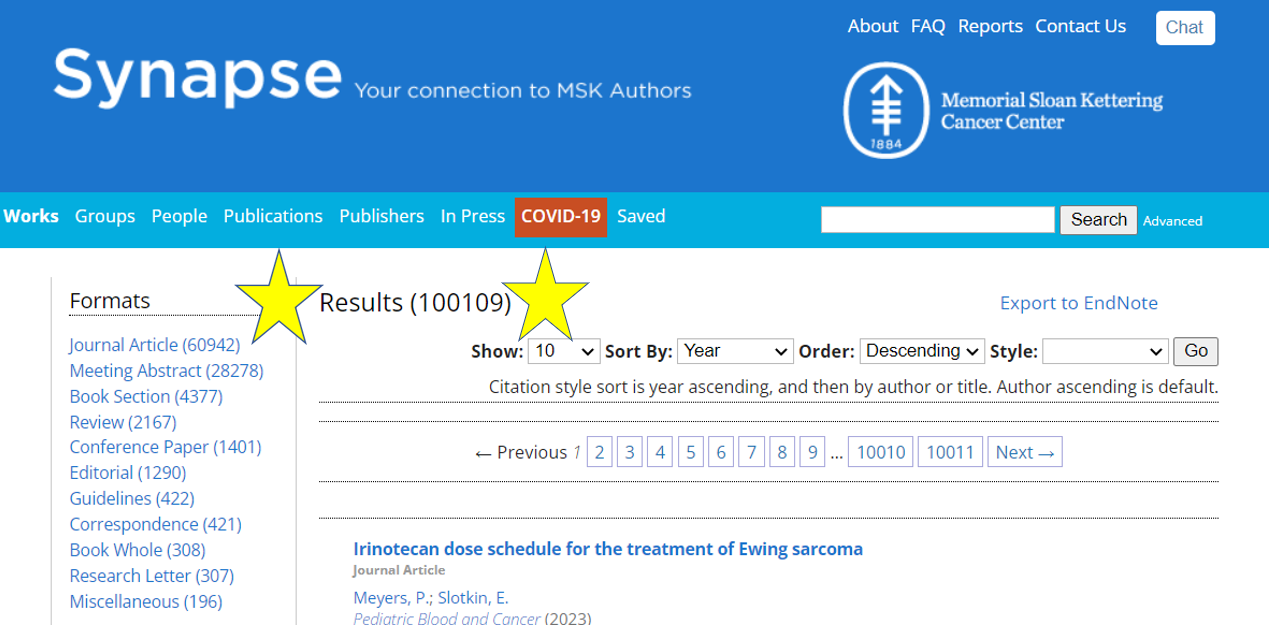Whether for a grant proposal, annual review, CV, or just plain curiosity, authors often seek to measure the impact of their research. Synapse, our database of MSK authors and their publications, is a quick and reliable source for two common research metrics: citation counts (Dimensions), and online attention (Altmetrics). From your author profile page, you can select any of your publications and quickly view the current research impact (if available) of your work via these two products from Digital Science.

CSF1/CSF1R signaling inhibitor pexidartinib (PLX3397) reprograms tumor-associated macrophages and stimulates T-cell infiltration in the sarcoma microenvironment. Molecular Cancer Therapeutics. 2021. DOI: 10.1158/1535-7163.Mct-20-0591
Taking a look at this example record, you can see that the article has been cited 45 times, according to Dimensions. Clicking on the citation badge links out to the Dimensions page, allowing you to directly see the works that have cited your article. The article was also mentioned by 5 news outlets, 1 tweet, and has 35 readers in Mendeley.

Altmetric detail page
If you click on the colored donut you will be taken to the Altmetric page where you can view additional information regarding the paper’s online attention, such as direct links to news stories and tweets.
They also provide additional details comparing the article to other tracked outputs of a similar age and/or source journals. Our example is in the top 5% of all research outputs tracked by Altmetric, and the top 97th percentile of all outputs from the same source journal and age.
For assistance on research metrics or questions about Synapse, contact us.

